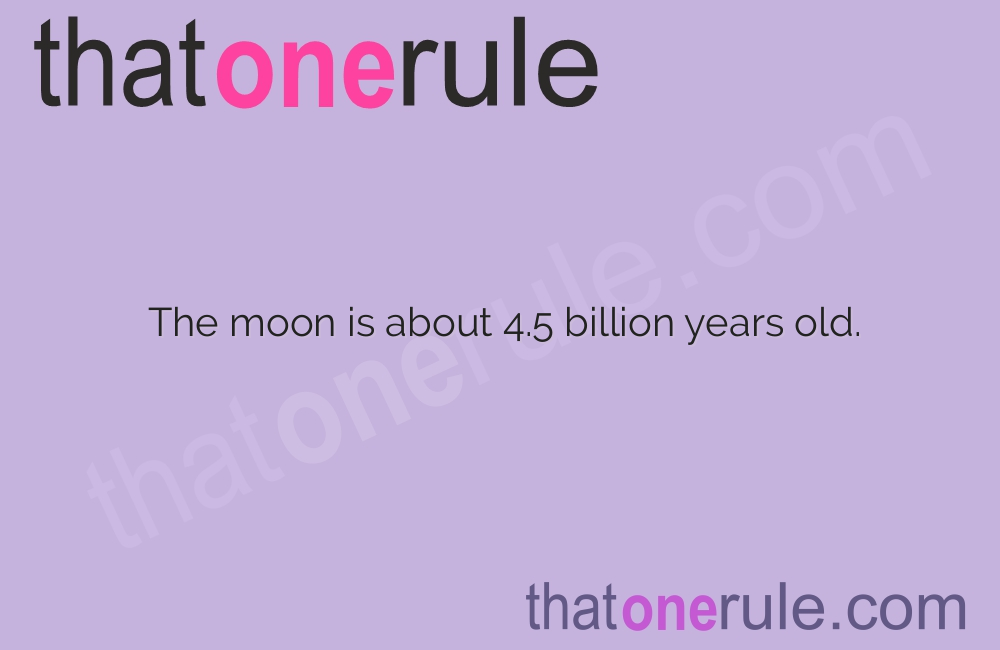Discover Fascinating and Fun Facts About the Moon

The moon is about 4.5 billion years old.
The moon is Earth’s only natural satellite.
The moon is not a perfect sphere, but slightly egg-shaped.
The moon is the fifth largest moon in the solar system.
The moon’s gravitational pull creates tides on Earth.
The moon is approximately 238,900 miles away from Earth.
The moon has no atmosphere, which means there is no weather or wind.
The moon’s surface temperature can range from extremely hot to extremely cold, depending on the location.
The moon has patches of dark and light areas called lunar maria and highlands.
The moon takes about 27.3 days to orbit the Earth.
The side of the moon that faces Earth is called the near side, while the other side is referred to as the far side.
The moon’s gravity is about 1/6th of Earth’s gravity.
The first humans to walk on the moon were Neil Armstrong and Buzz Aldrin in 1969.
The moon has no sound because there is no air to carry sound waves.
The moon has no plants or animals, but there is evidence of water ice in some craters.
The moon’s largest crater is called the Aitken Basin and is about 1,550 miles wide.
The moon has a synchronous rotation, which means it takes the same amount of time to rotate on its axis as it does to orbit the Earth.
The moon’s gravity affects the Earth’s rotational speed, causing our days to become longer over time.
Discover Fascinating and Fun Facts About the Moon part 2
The moon’s surface is covered in fine dust called regolith.
The moon is slowly moving away from Earth at a rate of about 1.5 inches per year.
The moon’s phases are caused by the changing positions of the sun, Earth, and moon.
The moon is responsible for creating solar and lunar eclipses.
The moon has been visited by spacecraft from various countries, including the United States, Russia, and China.
The moon’s surface is scarred with millions of impact craters from asteroids and meteoroids.
The moon’s gravitational pull can affect the behavior of animals, such as tides affecting marine life.
The moon has weaker gravity than Earth, allowing astronauts to jump six times higher than they can on Earth.
The moon’s surface is constantly bombarded by micrometeorites, which create small flashes of light called lunar transient phenomena.
The moon is thought to have formed from a giant impact between Earth and a Mars-sized object.
The moon has been a source of inspiration for artists, poets, and writers for centuries.
The moon’s appearance can vary depending on its position in the sky, atmospheric conditions, and the presence of dust.
The moon can sometimes appear orange or red during a lunar eclipse due to the Earth’s atmosphere bending sunlight.
The moon’s sunlight reflects off Earth, creating a faint glow on the moon’s dark side called Earthshine.
The moon’s gravity helps stabilize Earth’s tilt, which is important for maintaining our seasons.
The moon’s valleys and ridges were formed by ancient volcanic activity.
The moon is approximately 1/6th the size of Earth.
The moon’s gravity affects the Earth’s ocean tides, causing them to rise and fall.
The moon’s lack of atmosphere means there is no protection from cosmic rays and meteoroids, making it a harsh environment for humans.
The moon’s surface is covered in footprints and various items left behind by astronauts during their missions.
The moon was named after the Roman goddess of the moon, Luna.
The moon is often associated with romance and is a symbol of love in many cultures.
The moon’s brightness can vary due to its elliptical orbit around Earth.
The moon’s surface is made up of rocks, dust, and small craters.
The moon’s gravitational pull affects the Earth’s axial tilt, which is responsible for the changing seasons.
The moon’s atmosphere contains trace amounts of gases such as helium, neon, and sodium.
The moon has played a significant role in shaping Earth’s history, from influencing tides to providing a source of inspiration for exploration and discovery.
